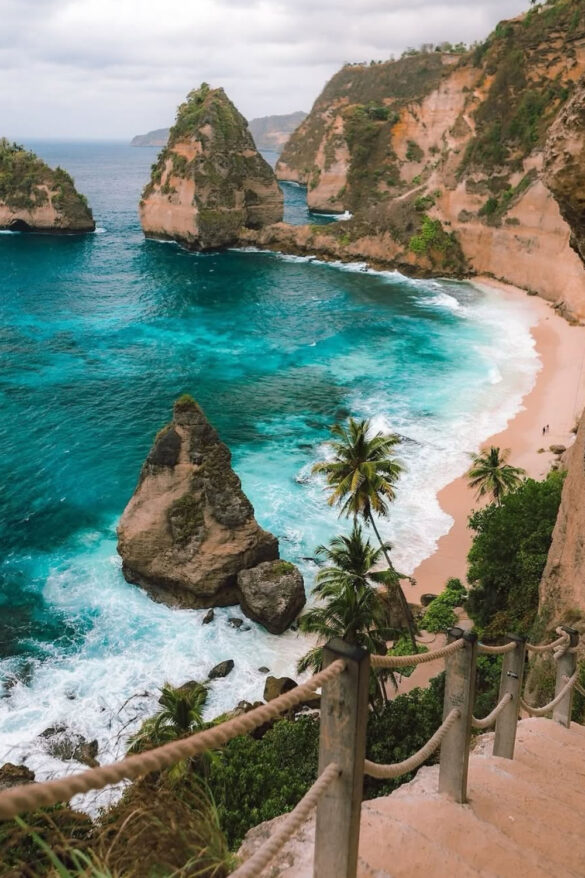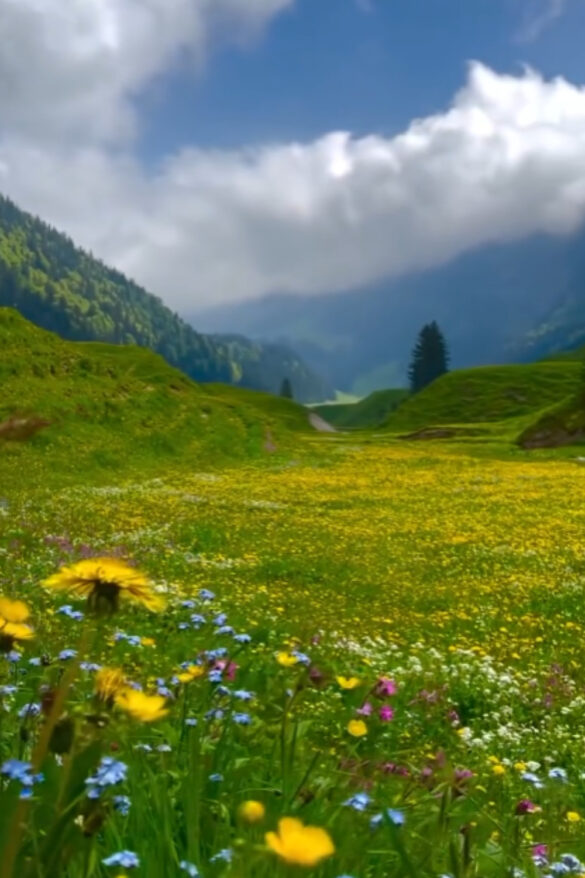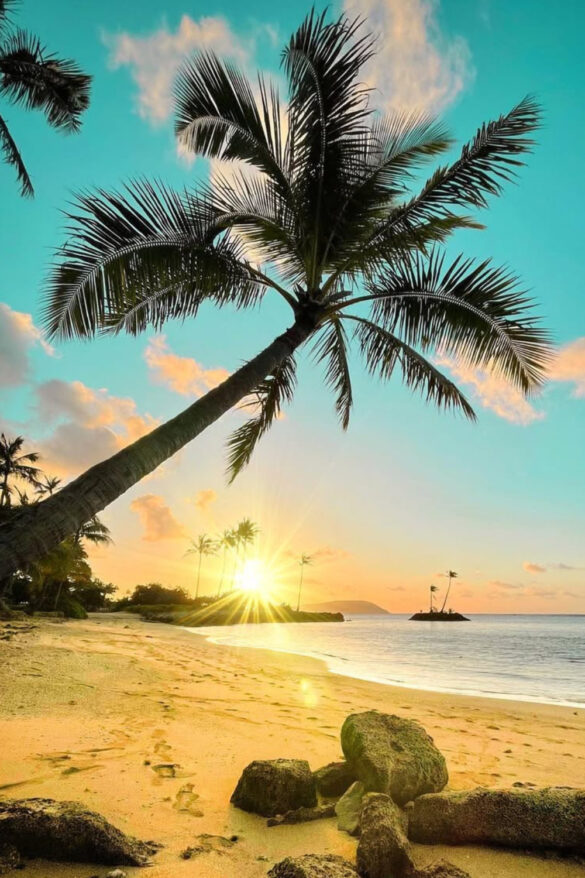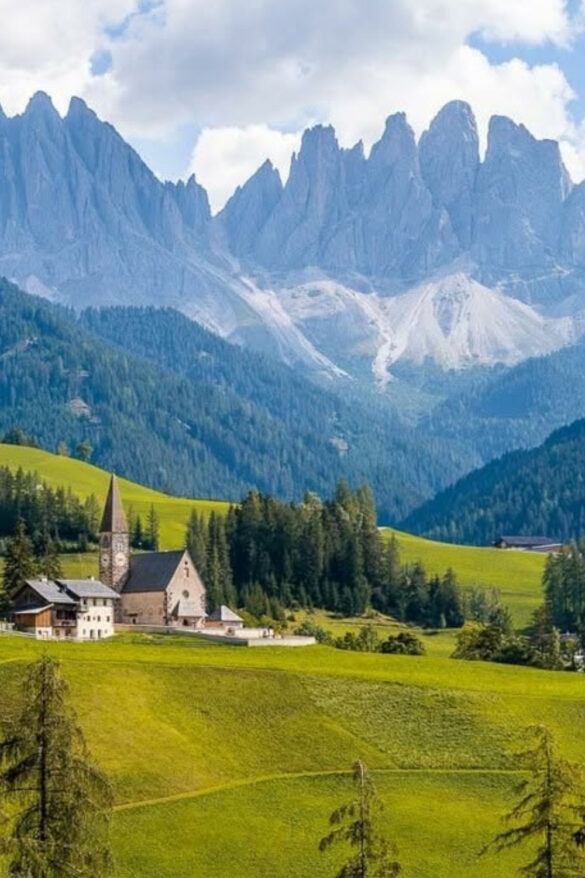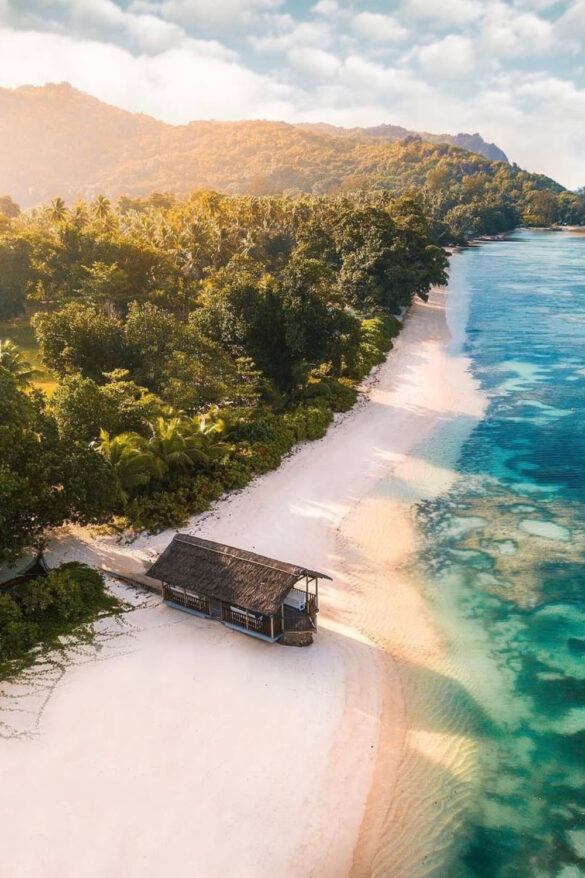And greet ye, newcomers to Europe? Are you fantasizing about quaint cobblestone streets, landmark attractions, local delicacies, and a spiraling of cultural events? The following 10-day itinerary of Europe is carefully designed by me with an aim of making your trip a memorable one as you visit various cities that are considered to be the most popular in the continent. We know that the first European adventure is something that can be overwhelming because there is a lot of ground to cover, and it seems endless. This is why we have made an itinerary that is balanced, and combines the places that you must see, with the experiences of the people in the country, which all fits within your budget and travelling style. – The Ultimate 10-Day Europe
Europe is a very diverse continent, with a single country presenting a fantastic array of history, art, and nature. Whether it is the romantic passion of the Venice canals or the historical glory of Rome and the artistic masterpiece of Florence, this Ultimate 10-Day Europe Itinerary to First-Time Traveler will take you on a fascinating tour. This is not an enumeration of the places, but is a well thought out tale, which is intended to enable you to spend the greatest part of your days in Europe, and the least part of your days in worry, besides have the time of your life. We will explore the best tips to travel successfully, focus on cultural peculiarities, and provide you with the information needed to make the most of every moment. You are about to be motivated, educated, and willing to take the adventure of a lifetime.
We aim to deliver in-depth, practical information about your first trip to Europe so that you are fully equipped to take part in all the activities such as taking the train ride to ordering something at a local trattoria. This is more than a program, it is a window into Europe.
The most important things you will learn through this Itinerary:
- Strategic Planning: Learn how to make the most of your time in between cities by taking the best routes and visiting the most places.
- Cultural Immersion: Find out tricks to connect with local customs, traditions, and etiquette in any one of the destinations.
- Travel on a Budget: Reveal how to spend less money on accommodation, food and attractions without skimping on quality.
- Effective Touring: Learn to travel to the biggest tourist attraction sites without having to stand in a long queue or face enormous crowds.
- Safety and Preparedness: Learn the lessons needed to keep safe and deal with unforeseen circumstances when you are on the road.
By the time you finish this guide, you won’t just have a clear 10-Day Europe Itinerary for First-Time Travelers but you will also have the confidence and the knowledge to navigate Europe like a well-travelled globetrotter. Therefore, pull out your bags, pick up your passport and come on this amazing trip with me!

Day 1-3: Rome, Italy – The Eternal City
To Rome, which is a city where the ancient past exhales in unison with the new existence! Rome, the capital of Italy, is the perfect place to start our final 10-day itinerary of a first-time traveler in Europe because it provides an unmatched experience of the past. We have invested three days of our life in this great city so that you can take your time in appreciating the rich heritage of the city. The historical significance of Rome cannot be overestimated: it was the seat of the Roman Empire, the place of origin of Western civilization, and the seat of the Catholic Church. All the streets, all the stones narrate about emperors, gladiators, artists, and popes.
Day 1 Welcome and Wonder of the World.
When you arrive at Fiumicino Airport (FCO) use the Leonardo Express train going to the central station called Termini. It is usually the fastest method of reaching the city. Once you check in to the place where you stay and settle in, your first experience of Rome must be the most recognizable sites in Rome. It is best to start with the Colosseum, which is the greatest amphitheater of all time. A UNESCO World Heritage site, this huge building is a tribute to Roman engineering and a chilling reminder of the gladiatorial combats that took place here. To enjoy the experience fully, I would recommend that you purchase a guided tour in advance and bypass the queues and learn as much as you can about its history. The Roman Forum and Palatine Hill are located right next to the Colosseum. This was the center of ancient Rome, a vast network of temples, basilicas and open spaces. As you pass through the ruins, you can almost hear the applause of the speeches of Cicero and the hustle and bustle of the city. At sunset, make a first visit to a lovely trattoria in the Monti area to have your first real Italian dinner.
Day Two: the Republic of Vatican and Renaissance.
Today is devoted to a nation inside a city: Vatican City. The spiritual and artistic centre of the Catholic world, this is the home of the Pope. You can start your day by going to Vatican Museums. It is not negotiable to avoid hours of waiting by pre-booking tickets. The Sistine Chapel, and the wonderful frescoes of the ceiling, by Michelangelo, the Creation of Adam and the Last Judgment, are the best things to see. This masterpiece is overwhelming in its size and elaboration. After the museums, you will come out into St. Peters Basilica which truly is an awe-inspiring Renaissance architecture. Do not fail to ascend to the summit of the dome and then look out upon St. Peter Square and the whole of Rome. Afternoon may be spent in the lovely streets of the Trastevere district, with its air of bohemia, its workshops, and its carnivals. It is the best spot to be on the local side of Rome.
Day 3: Fountains, Fashion and Squares.
On your last day in Rome, you will be able to enjoy the artistic and social life of the city. Start at the great Trevi Fountain. Toss a coin over your shoulder in the fountain so that you will be sure to come back to Rome, a custom that finances restoration projects and charities. Then walk to the Pantheon, an ancient Roman temple that still has a perfectly intact dome and an open oculus. Its architectural brilliance has confounded engineers over thousands of years. Keep on walking to Piazza Navona, which is a lovely Baroque square, with the famous Fountain of the Four Rivers by Bernini. A good place to have a coffee and people watch. Afternoon time is ideal to have a retail therapy on Via del Corso or Via Condotti where high end Italian fashion is located. Before you leave in the evening, you can have one final Roman dinner and maybe a proper gelato.
Keep Thirsty: Find Nasoni, the drinking-fountain of Rome, whence thou shalt have safe and free water.
The first-time traveler error is to over-estimate the time and energy needed to explore Rome, as a vast historical location. An example is when a group of US-bound tourists tried to visit Colosseum, Roman Forum, Vatican Museums and St. Peter Basilica in a single day. They did not reserve tickets in advance and spent more than three hours in lines, seeing very little and feeling tired and irritated. Conversely, another couple who had a planned schedule pre-booked all their tickets online which included a guided tour of the Colosseum. They visited the same sites on two days, they had time to eat well, and they considered it to be a far more rewarding and enjoyable experience. This brings out the extreme significance of strategic planning, particularly to such a tight schedule.
Practical Tips for Rome:
Be Thirsty: Seek Nasoni, the springs of Rome, whence shall be water safe and free.
Wear comfortable shoes. Most of the day you will be walking on cobblestones that are not even.
• Watch Out for Pick Pockets: particularly in tourist prone places and on a bus. Keep your valuables secure.
Day 4-6: Florence, Italy – The Cradle of the Renaissance
We must now lead to the infinite magnificence of Rome, which is a portion of our ten days journey to Europe, as first time travellers, and so we make an idyllic turn at Florence, capital of Tuscany and the mother of the Renaissance. Florence is a city of unsurpassed artistic and architectural splendor, a living museum which has inspired generations of painters, sculptors and thinkers. The journey takes no time; the high-speed train at the Termini Station in Rome will set you down in the station at Florence, Santa Maria Novella within a matter of time, say, 90 minutes. This is the most convenient mode of transport as you can make the most of your time, as on reaching Florence you have more than an afternoon to work with.
Day 4 Masterpieces of Art and Arrival.
Once you have settled in your hotel, the first thing you should do in Florence is to visit its most famous museum the Galleria dell ‘Accademia. Although this museum contains numerous wonderful pieces, the masterpiece of Michelangelo, David, is certainly the best attraction. It is a very humbling experience to stand in front of this famous sculpture. The dimension, the finesse and the feeling are staggering. You should ensure that you book your tickets early in order to enjoy it. After seeing David, have a slow stroll around the city centre to the spectacular Duomo Complex, consisting of the Florence Cathedral, Giotto Bell Tower and Baptistery of St. John. The cathedral dome which Filippo Brunelleschi designed was an experiment of its time and an expression of the ingenuity of Florence. There is also the most beautiful view of the red-tiled roofs of Florence and the Tuscan hills, a panorama best seen by climbing to the top of the either the dome or the bell tower. Finish your day by walking over the Ponte Vecchio, the historic stone bridge in Florence that is covered in jewelry shops.
Day 5: the charisma of Oltrarno and the Uffizi gallery.
Today is devoted to one of the most famous art collections in the world Uffizi Gallery. It is based directly adjacent to Piazza della Signoria, and it is in this gallery that the master works of the Italian Renaissance such as The Birth of Venus by Botticelli and the Annunciation by Leonardo da Vinci is housed. The amount of world-class art can be daunting, it is prudent to plan your visit by looking at a few of the main sections. Once again, it is important to book the tickets online to save on long queues. When you have absorbed yourself in art, go across the Ponte Vecchio to the Oltrarno. This is the artisan quarter of Florence, where you will find workshops of leatherworkers, jewelers, and restorers. It is more real and less tourist-oriented. Tour around the old streets and find some secrets. To complete the day, the best way to finish it is to hike up to the Piazzale Michelangelo to get a sunset view of the city, truly an unforgettable experience.

Day 6: Tuscany, Food and Markets.
The last day in Florence is devoted to the delights of the Florence cuisine. Begin the day by going to the Mercato Centrale (Central Market). The first floor is a classic food market, full of sellers of fresh products, cheeses, cured meats, and Tuscan specialities. Instead, the upstairs has been turned into a colorful food court that provides fresh pasta, pizza, gelato and local wine. It’s an ideal spot for lunch. You could take a little day trip in the afternoon. A trip to a Tuscan vineyard to do some wine tasting and touring or to take a quick train to the beautiful city of Siena to visit its beautiful Piazza del Campo, is one of the popular options. In case you want to remain in Florence, you can take a cooking course to discover how to prepare fresh pasta or a typical Tuscan meal. This practical lesson is a closer attachment to the culture.
Data Snapshot: High-Speed Train Travel in Italy
The efficiency of Italy’s high-speed rail network, operated by companies like Trenitalia and Italo, is a game-changer for this “10-Day Europe Itinerary for First-Time Travelers.”
| Route | Average Travel Time | Cost Range (Pre-booked) | Benefits |
| Rome (Termini) to Florence (SMN) | ~1 hour 30 mins | €25 – €60 | Fast, comfortable, city-center to city-center travel. |
| Florence (SMN) to Venice (S. Lucia) | ~2 hours | €30 – €70 | Scenic journey, avoids airport stress. |
| Venice (S. Lucia) to Milan (Centrale) | ~2 hours 30 mins | €30 – €75 | Connects major northern hubs. |
This table illustrates the cost-effectiveness and time-saving nature of train travel compared to flying or driving, making it the preferred mode of transport for our itinerary.
Practical Tips for Florence:
- Book in Advance: Tickets for the Uffizi and Accademia galleries, as well as train tickets, are best purchased weeks, if not months, in advance.
- Beware of Leather Goods: Florence is famous for its leather, but be wary of street vendors selling counterfeit goods. Stick to established shops.
- Explore Beyond the Center: While the main sights are concentrated in the historic center, don’t be afraid to wander. The Oltrarno district and Fiesole (a short bus ride away) offer unique perspectives.
Day 7-8: Venice, Italy – The Floating City
There, in the rolling hills of Tuscany, our 10-day Europe tour first-time traveler sets sail north to the beautiful city of Venice. In two or three hours, a fast train will take you to Venezia Santa Lucia station in Florence. As soon as you leave the station, you are taken into another world, another world with no cars, no labyrinth of canals, marvelous architecture, which cannot be explained by any logic. Two days will be enough to visit the main attractions and get lost in the peculiar charm of the city, which no European first trip should be done without.
Day 7: Gondolas, Grandeur and Canals.
Land transport offers no alternative to the special mode of transportation once one arrives in Venice, namely, the vaporetto, or water bus. Buy a day admission pass to orientate around the Grand Canal of the city. The best place to start is the very core of Venice: the St. Mark square (Piazza San Marco). It was the drawing-room of Europe, as Napoleon was very fond of saying. The square is surrounded by the splendid St. Marks Basilica, a spectacular combination of Italo-Byzantine architecture with a gleaming interior of mosaics, and the Doge Palace, the former seat of the Venetian Republic. Ticket booking on both is important in order to avoid the infamous lines. Once you have seen these landmarks, take a ride on a gondola. It is very touristy, yet offers a romantic and intimate look of the city canals and bridges that are not visible. During the evening lose your way in the twisting and small streets of the San Polo or Dorsoduro area, seeking a small restaurant that will offer you a real Venetian meal.
Day Eight: Day that is devoted to craftsmen and Island hopping.
On the second day, go outside of the key island to visit the lagoon islands of Venice. The most popular three are Murano, Burano, and Torcello, all reachable by vaporetto without any problems. Murano is globally known as a glass-maker. In this case, you have the ability to observe professional craftsmen working at a glass factory making some amazing pieces of art, which is quite an eye-opening experience. Then go on to Burano, with its houses painted in bright colours, and its lace-making. The bright colors of the constructions are a visual delight and simply stunning to shoot a photograph. Last but not least, you must go to Torcello, the more peaceful island, which has the oldest church in the Venetian Lagoon, the Cathedral of Santa Maria Assunta, with its gorgeous Byzantine mosaics. The island is a quiet respite to the maddening traffic of central Venice. Spend the last evening in Venetian drinking a spritz (the local aperitif) and having a nice meal.
Problem: Venice Flooding (Acqua Alta) Case Study.
Due to the special geography of Venice, there is a phenomenon, which is called acqua alta (high water), when the high tides make some areas of the city covered with water. As an example, in November 2024, a surprise acqua alta besieged many tourists. People who had arranged their visit ignorant of this, found part of St. Marks Square, and of other low grounds, flooded, and it was with difficulty that they could make their way. But experienced travelers and natives were ready. They had already looked up the tide predictions on the City of Venice web site and carried waterproof boots, so they could go on with their explorations with minimal inconvenience. This shows the significance of having knowledge of the surrounding environment and how you can be adaptable with your plans.
Practical Tips for Venice:
- Travel Light: You will lug your luggage across so many stairs and bridges because wheeled suit cases are bulky.
- Ride a Vaporetto: Individual tickets are not cheap. Multi-day pass is also a considerably cheaper and more convenient alternative.
- Skip Chinese Restaurants along the Grand Canal: There are lots of restaurants along the Grand Canal in tourist spots whose food is of low quality and charged high prices. Go into the side streets to find a better place and more traditional food.
Day 9-10: Paris, France – City of Light
It all leads to a grand finale in Paris, the City of Light with the amazing canals of Venice which are yet another wonder, concluding our 10-day Europe tour guiding first-time visitors to the most fascinating places in Europe. The trip between Venice and Paris can be accomplished by a combination of high-speed train and an additional flight or, more often, by a direct flight between the Venice Marco Polo Airport (VCE) and the Charles de Gaulle Airport (CDG) in Paris. A flight will only take a few hours, but it will be the safest and quickest mode of transportation on this last stage of your journey, and you will have two entire days to explore the beauty and charm of Parisian life.
Day 9: Paris sightseeing and Paris living.
Arriving at CDG, you can take the RER B train and go to the center of the city. This is the cheapest and quickest mode of approaching Paris. Once you have checked in, there is nothing like starting your Parisian journey with the most famous landmark of the city, the Eiffel Tower. It is hard to deny the majesty of it, whether you decide to climb the top to enjoy the breathtaking view of the city or just stay and enjoy it right in the Champ de Mars. Then walk down the Champs-Elyssee to the Arc de Triomphe, a monument to the military achievements of France. The Arc top perspective is arguably superior to that of the Eiffel tower and provides a alternative perspective of the star-shaped street pattern of the city. Afternoon Cross the Seine River to the Musée d’Orsay, which occupies a great former railway station. This museum is known to have the largest number of Impressionist and Post-Impressionist paintings by artists such as Monet, Degas and Van Gogh. Complete your day with a trip to the artistic district of Montmartre and the magnificent Sacre-Ceur Basilica where you can have a truly classic Parisian experience and a parting panoramic view of the city at sunset.
Day 10: the Louvre, and the Latin quarter.
The last day in Paris is spent in one of the largest and most famous museums in the world the Louvre. The Louvre is home to the Mona Lisa, the Winged Victory of Samothrace and the Venus de Milo and could be days and days to see everything it has to offer. To visit at once, you need to plan the route beforehand and schedule the places you would like to visit. You should not even attempt to see it all; you will be exhausted. However, your visit to the museum should be followed by a stroll through the lovely Tuileries Garden and then a cross of the Seine to the Île de la Cite to peep in at the outside of Notre-Dame Cathedral (which is undergoing restoration, but still an overwhelming view). The adjacent Sainte-Chapelle is also worth paying attention to, the beautiful stained-glass windows. End your schedule in Latin Quarter. This ancient part of town houses the Sorbonne University and is full of bookstores, quaint cafes and bustling streets. It is the best place to have a farewell French dinner and to look back on your wonderful 10 day trip.
Not just about going to landmarks, but also just being there, being in the culture, walking the same streets like before and knowing the stories behind every nook and cranny of these marvelous cities.
To learn in the street, as one famous French author Victor Hugo once remarked, is a thousand times better than learning anything in a school. This quote best describes the spirit of this itinerary.
- Reservation: Before planning to visit the Louvre and the Eiffel tower, make the reservation to avoid long lines.
Paris checklist:
- Paris Museum Pass: Once you are willing to go to different museums this will save you some money and more importantly time because you would avoid waiting in queues to buy tickets.
- Metro Tickets: Paris Metro is very convenient and easy to use. Your two day stay at the hotel is usually a good value with a carnet of 10 tickets.
- Booking: When planning to visit the Louvre and the Eiffel tower, book the place in advance to avoid long lines.
This is the final 10-day best Italy and Europe places to visit if it is the first time there is the best combination of history, art and culture. Though it is a high-energy binge, it will provide a real experience of three of the most iconic countries in Europe. In Rome, in Florence, in Venice, in Paris, in all those beauty and art which we can remember since our youth, you will have something to recollect throughout your life.
Summary and Final Thoughts: Your European Adventure Awaits
Congratulations! That was a full and thorough list of the final 10 day Europe itinerary of a first time traveler. This trip is carefully planned to be a balance between the iconic and the true-to-life experiences of a local trip with the idea that it would make the perfect launch pad to a lifetime love affair with traveling across Europe. Whether it is the ancient resonance of Rome or the Renaissance genius of Florence, the alluring canals of Venice and the romantic splendor of Paris, you have a blueprint of an adventure to remember.
The most important things you learned during your 10-day trip were:
- The Name of the Game is Efficiency: Pre-booking, strategy planning and high-speed trains are on your side. They use the least amount of time and effort and maximize your time to explore.
- Cultural Immersion: The itinerary is not a case of checking off the box in the list of attractions. It is about enjoying a Florentine gelato, being lost in a Venetian street and enjoying the uncomplicated pleasure of a Parisian cafe.
- Flexibility is a Virtue: The itinerary will give you a great outline, but there is nothing wrong with going off. Should you see a local market or a back street, go and explore the avenue of your curiosity. Memorable things occur most of the time accidentally.
- Pack Light, and yet, Smart: Squeasy Shoes are not a Bargain. Layers are essential. A nice anti-theft bag will give you peace of mind when you are in crowded places.
What This Itinerary Accomplishes:
- Itinerary First-Time Visitors: This plan is designed specifically to take the first-time visitor to Europe, and has the benefit of offering a logical, easy-to-follow sequence between sites.
- Total Immersion: It consists of world-famous museums and historic sites with local people and food.
- Taste a Little of the Multiple Cultures: You explore much of the Italian and French culture, language, and way of life, all in ten days.

Final Words of Advice – The Ultimate 10-Day Europe
When you start planning your trip, keep in mind that travelling is not about the destinations you explore, it is also about the things you hear and the people you meet. Meet new people, eat new food, and experience new things. Europe is a continent with rich history and cultures and this itinerary is only the tip of the iceberg.
Disclaimer: This blog post relies on the information to date and is only meant to act as a guide. Certain information like prices and timing hours and travel timetables can change and need to be checked nearer to the time you travel. We would always advise using official websites and resources to find out the latest information.
References:
- This comprehensive guide was developed using information from reputable travel sources and guidebooks, including but not limited to:
- Fodor’s Travel Guides
- Lonely Planet Guides
- Rick Steves’ Europe Guides
- Official tourism websites for Rome, Florence, Venice, and Paris.
- Research on high-speed rail networks (Trenitalia, Italo, SNCF).

